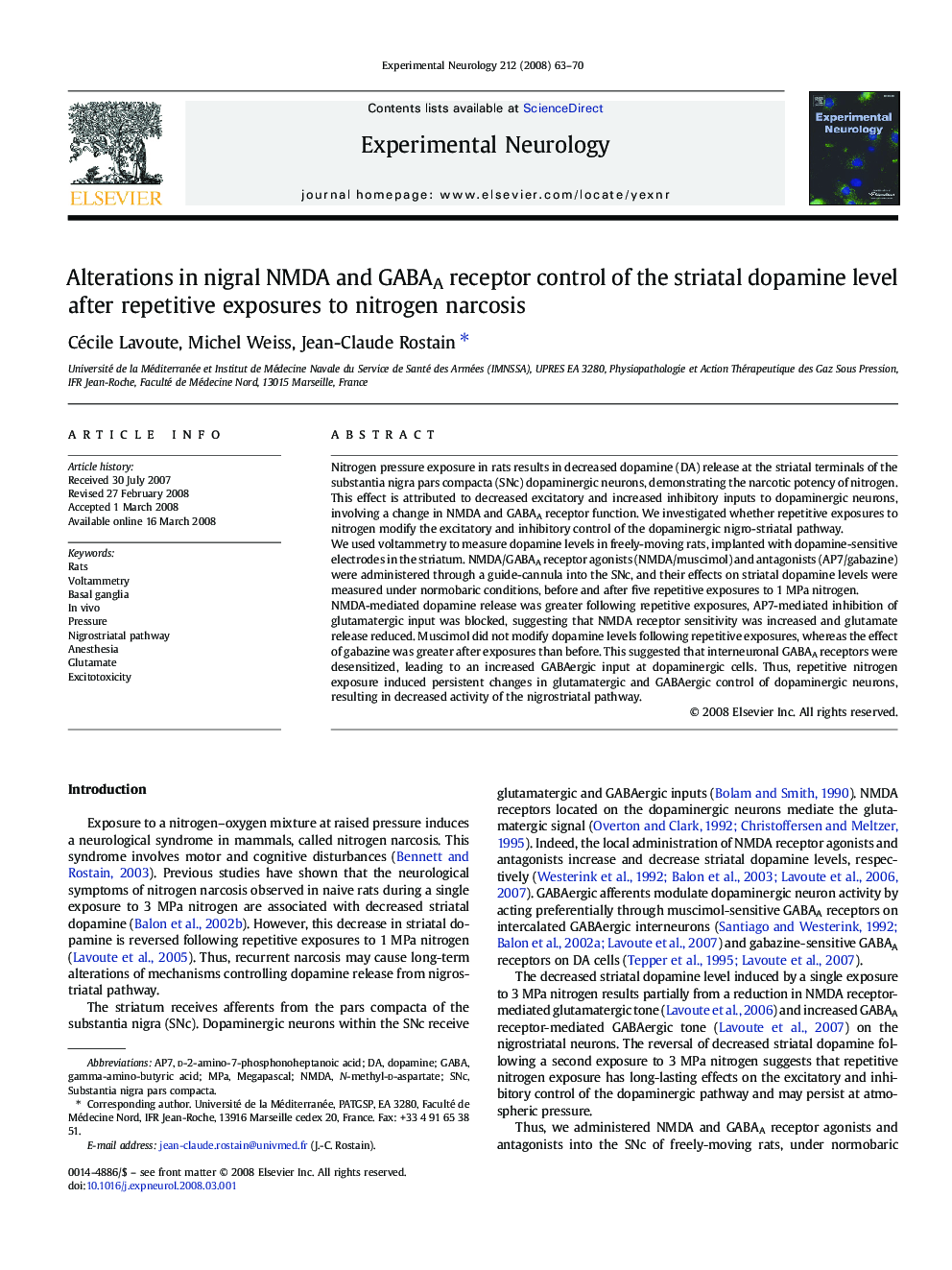| Article ID | Journal | Published Year | Pages | File Type |
|---|---|---|---|---|
| 3056596 | Experimental Neurology | 2008 | 8 Pages |
Nitrogen pressure exposure in rats results in decreased dopamine (DA) release at the striatal terminals of the substantia nigra pars compacta (SNc) dopaminergic neurons, demonstrating the narcotic potency of nitrogen. This effect is attributed to decreased excitatory and increased inhibitory inputs to dopaminergic neurons, involving a change in NMDA and GABAA receptor function. We investigated whether repetitive exposures to nitrogen modify the excitatory and inhibitory control of the dopaminergic nigro-striatal pathway.We used voltammetry to measure dopamine levels in freely-moving rats, implanted with dopamine-sensitive electrodes in the striatum. NMDA/GABAA receptor agonists (NMDA/muscimol) and antagonists (AP7/gabazine) were administered through a guide-cannula into the SNc, and their effects on striatal dopamine levels were measured under normobaric conditions, before and after five repetitive exposures to 1 MPa nitrogen.NMDA-mediated dopamine release was greater following repetitive exposures, AP7-mediated inhibition of glutamatergic input was blocked, suggesting that NMDA receptor sensitivity was increased and glutamate release reduced. Muscimol did not modify dopamine levels following repetitive exposures, whereas the effect of gabazine was greater after exposures than before. This suggested that interneuronal GABAA receptors were desensitized, leading to an increased GABAergic input at dopaminergic cells. Thus, repetitive nitrogen exposure induced persistent changes in glutamatergic and GABAergic control of dopaminergic neurons, resulting in decreased activity of the nigrostriatal pathway.
